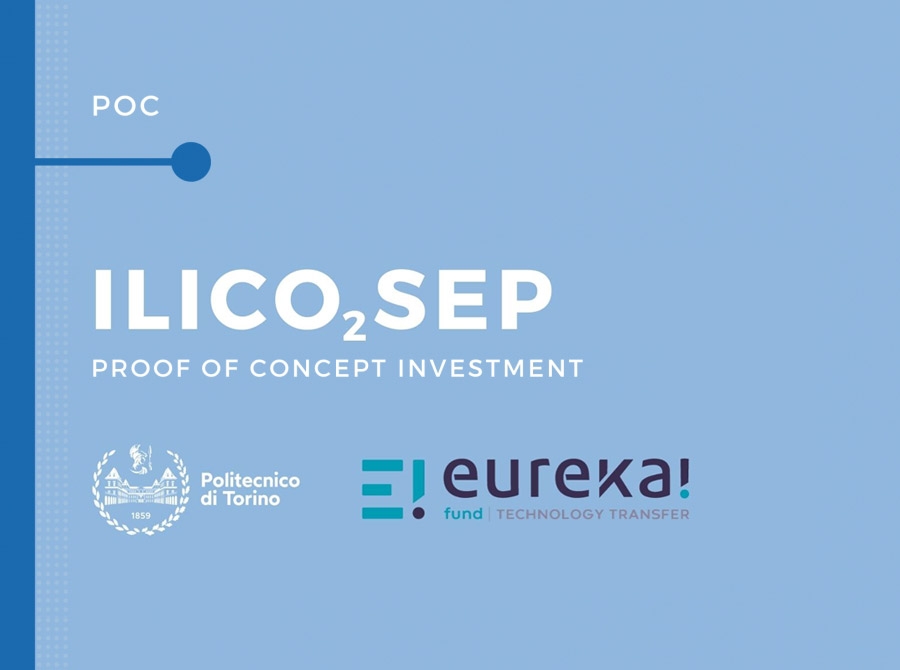- Fund: EUREKA! FUND I – TECHNOLOGY TRANSFER
- Sector: CLIMATE AND ENERGY
- Technology: CO2 CAPTURE
- First Investment: JUNE 2022
- Round: POC (proof of concept)
- Partner: POLITECNICO DI TORINO
- Reference: FABRIZIO PIRRI
- Web: www.polito.it
ILICO2SEP
ILICO2SEP (Ionic liquids for CO2 separation) involves the development of innovative ionic liquids with hydrophobic property suitable for separating CO2 from gas streams without the need to use aqueous solutions, which is currently one of the crucial technical problems of the emerging solutions. IliCO2Sep provides a solution for capturing CO2 from point sources directly on-site (e.g., industrial waste pipes), facilitating biogas/biofuel production and subsequent environmental decarbonization. The goal is to develop and optimize hydrophobic ionic liquids (ILs) and use them as green solvents for CO2 uptake, increasing the effectiveness of capture. The project involves the optimization of the formulation of ILs and the study on impurity-dependent adsorption efficiency, aging, and simulations with pre-industrial scale trials
EUREKA! VIEW
Investing in Technology Readiness Levels (TRL) ranging from 3 to 5 requires a careful assessment of the potential of the technology and the team. Due to the low maturity of these projects, these projects require a de-risking process to be carried out directly at the University and Research Center. Eureka! TT S.r.l. is the Italian limited responsibility company fully owned by “Eureka! Fund I – Technology Transfer that acts on behalf of the Fund, in providing financial resources to the pre-company, Proof-of-Concept (“POC”) projects, as well as in monitoring the advancement and the results of such investments.
The resources provided by Eureka! are given to the University and Research Center, in order to develop the technology, increase TRL and support the team of the “to-be entrepreneurs” in proving their ideas are sustainable. Successful projects will be then span-out into new start-ups. Eureka! TT can effectively bridge the gap between the need for a market-driven test and a University-like environment.
